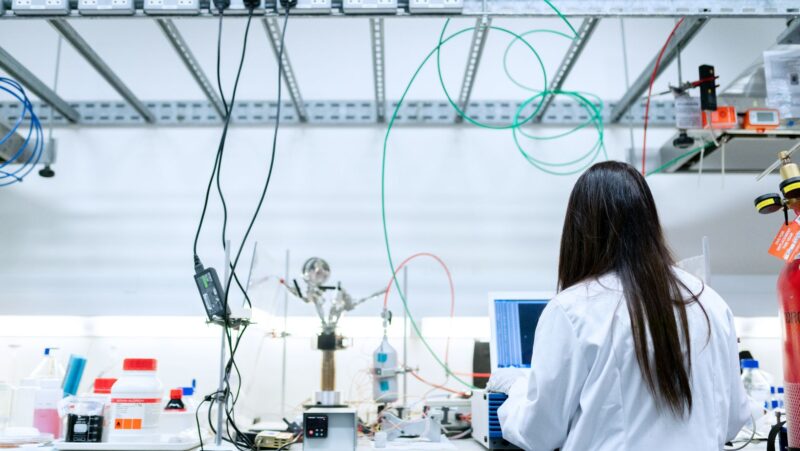Technological Innovations in Education
 In the ever-evolving landscape of education, technology has emerged as a game-changer. It’s reshaping how knowledge is delivered, consumed, and evaluated. This article delves into the fascinating world of technological innovations in education, exploring how they’re transforming the learning experience.
In the ever-evolving landscape of education, technology has emerged as a game-changer. It’s reshaping how knowledge is delivered, consumed, and evaluated. This article delves into the fascinating world of technological innovations in education, exploring how they’re transforming the learning experience.
From virtual classrooms to AI-driven personalized learning, technology’s footprint in education is expansive and profound. It’s not just about flashy gadgets or software; it’s about creating more engaging, inclusive, and effective learning environments. Stay tuned as we unravel the intricacies of these innovations and their impact on modern education.
Evolution of Technological Innovations in Education
Historical Perspective
Technological advancements have always had a profound influence on educational systems. The field saw initial changes with the advent of  the printing press in the 15th century, which democratized access to knowledge and paved the way for mass education. In the 19th century, the blackboard became a staple fixture within classrooms, aiming at a more interactive form of imparting knowledge.
the printing press in the 15th century, which democratized access to knowledge and paved the way for mass education. In the 19th century, the blackboard became a staple fixture within classrooms, aiming at a more interactive form of imparting knowledge.
Fast forward to the 20th century, the innovation of overhead projectors and calculators streamlined the teaching process. However, it’s the late 20th and early 21st century that bears testimony to a dramatic digital revolution in education. The swift shift from blackboards to interactive whiteboards and smartboards enhanced the teaching and learning dynamics.
The early 21st century saw the rise of the Internet as a learning resource, revolutionizing the education sector with online courses, educational software, and digital textbooks. Learning management systems and virtual classrooms reached a zenith in this era, creating an inexhaustible resource pool for learners and educators alike.
Recent Advances
Albeit, education observed its most mammoth strides through recent technological advancements. The explosion of mobile technology, cloud computing, gamified learning platforms, and virtual reality have stirred education into a new erudition era.
Tools like AI-driven personalized learning systems have helped learners study at their own pace, molding the education system into a more inclusive one. Virtual Reality (VR) and Augmented Reality (AR) assisted simulations have spurred a new form of experiential learning, bridging the gap between theory and practical application. Similarly, learning analytics powered by Big Data keeps track of student engagement, retention, and performance, allowing educators to modify their teaching strategies as required.
Moreover, cloud-based educational resources have democratized learning beyond physical classrooms, facilitating access to learning materials and digital resources for anyone, anywhere. E-learning platforms offer an abundant array of courses, lectures, and online tutorials, providing a vast virtual classroom and challenging traditional education paradigms.
Hence, technological evolution defines the new era of education and learning, shaping a more personal, engaging, and inclusive learning environment. The progression of technology has turned the tables, transforming the conventional education model to a more learner-centric one. As technology continues to evolve, one might anticipate its further infusion in education, driving a comprehensive learning experience.
Impact of Technology on Learning Outcomes
Educational technology brings a significant impact on learning outcomes. Previous technological innovations set the stage for a shift towards digital tools and resources, creating engaging and inclusive classrooms that revamp traditional education paradigms. The next segment explores the influence of such technological applications, focusing on enhanced engagement and personalized learning experiences.
Enhancing Engagement and Interaction
Engagement and interaction serve as critical components of the learning process—and technology fosters their promotion. Tools such as  virtual classrooms, digital simulations, and interactive whiteboards transform the teaching landscape, sparking student curiosity and fostering productive discourse. For instance, Virtual Reality (VR) takes learning beyond traditional written and visual content. Students utilize VR headsets to engage in immersive experiences, such as touring the International Space Station or the heart’s chambers, thus driving deeper comprehension.
virtual classrooms, digital simulations, and interactive whiteboards transform the teaching landscape, sparking student curiosity and fostering productive discourse. For instance, Virtual Reality (VR) takes learning beyond traditional written and visual content. Students utilize VR headsets to engage in immersive experiences, such as touring the International Space Station or the heart’s chambers, thus driving deeper comprehension.
Technology also facilitates streamlined communication between learners and tutors. Emails, discussion forums, video conferencing, and chatbots enable real-time interaction, creating an environment ripe for collaborative learning. Furthermore, they break geographical barriers, making education accessible to students across the globe.
The future of educational technology is here and it’s transforming how we learn. Virtual classrooms, AI-driven personalized learning, and interactive VR/AR experiences are just a few innovations that are breaking down traditional classroom barriers.